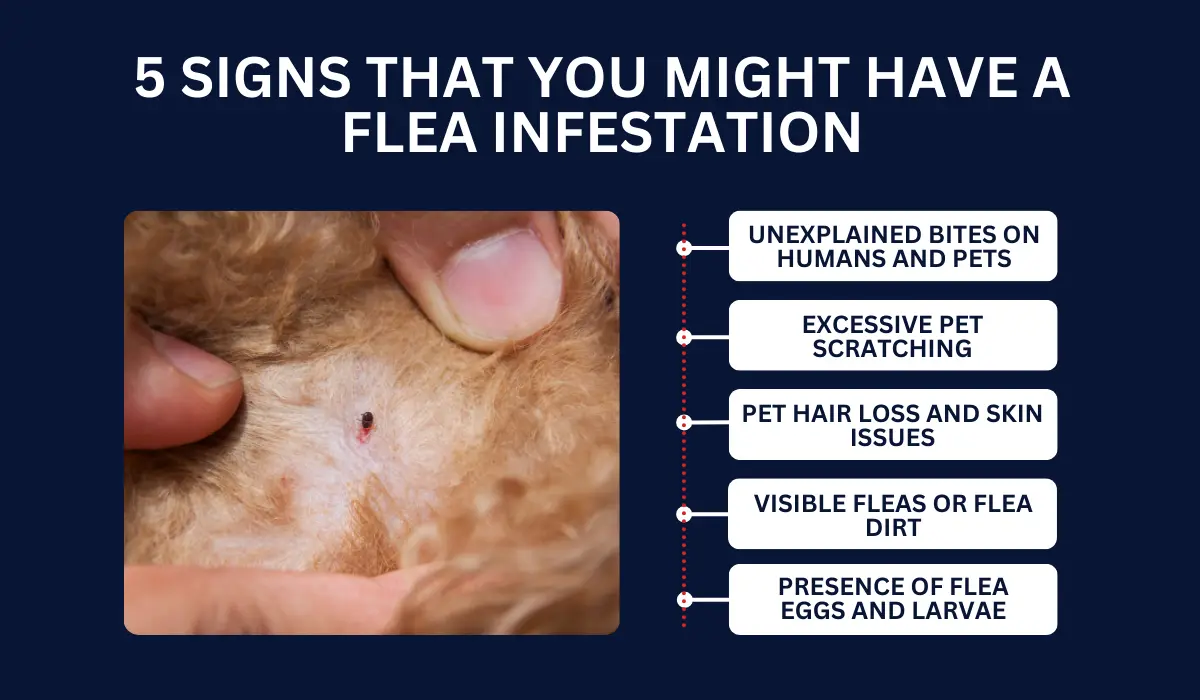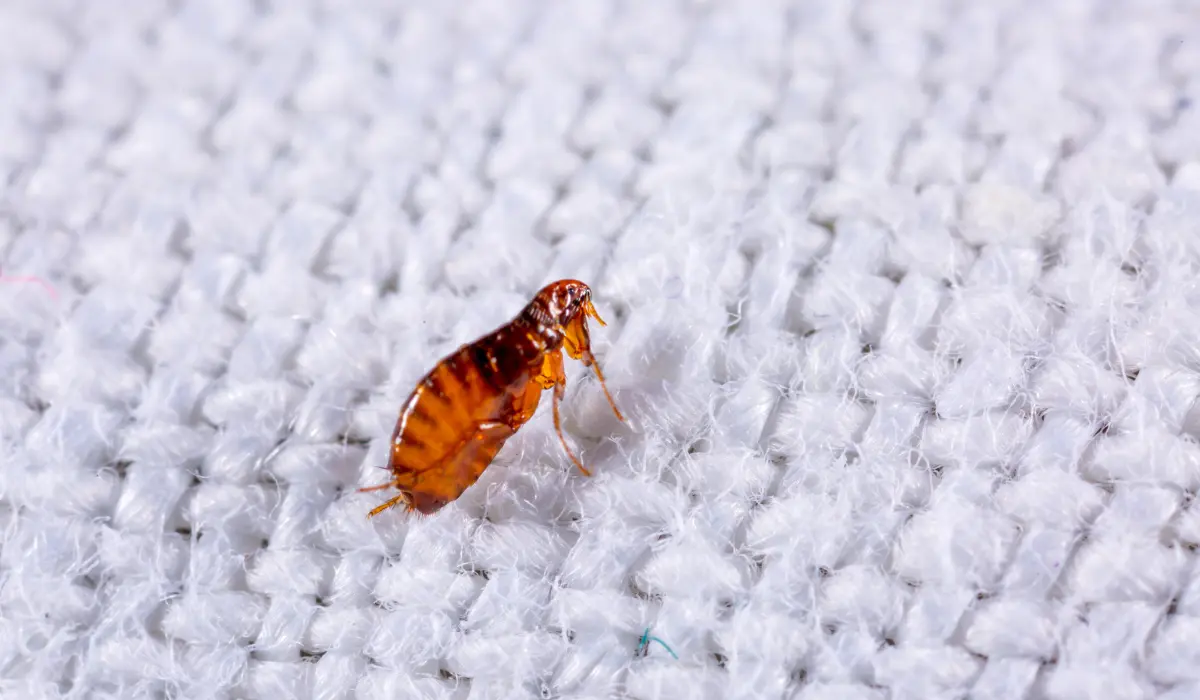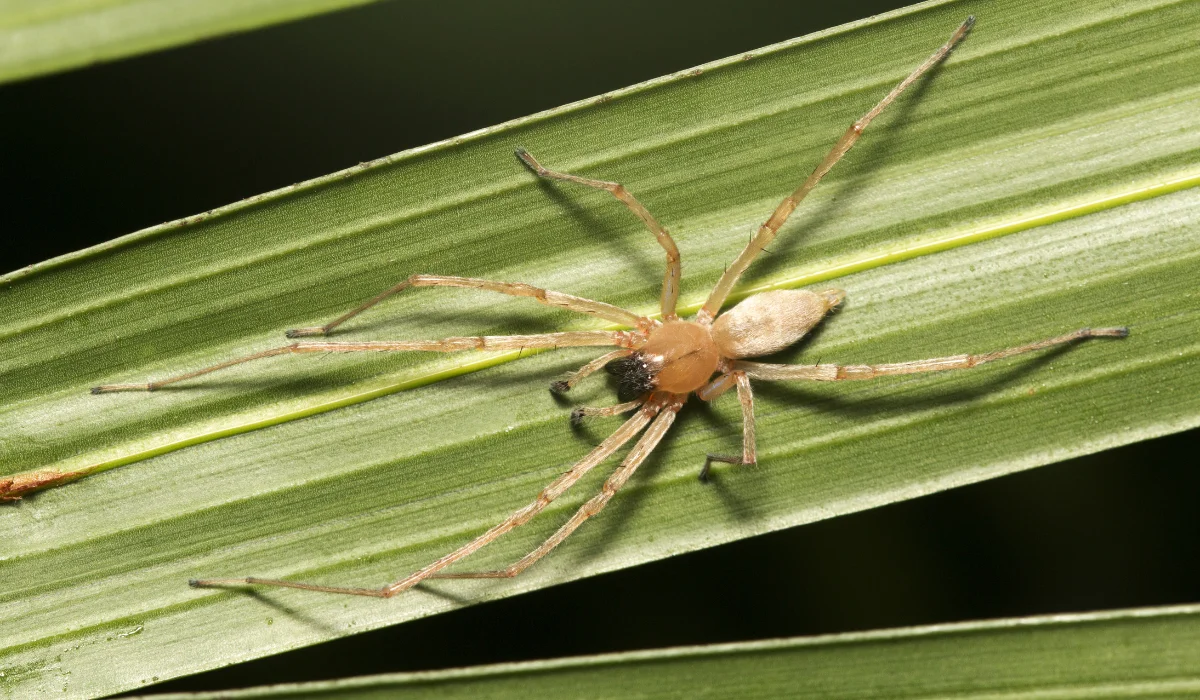Flea infestations can turn cozy homes into uncomfortable environments. So, recognizing the signs is the first step to control and prevention.
Look for flea dirt, small black specks that are flea feces, as a clear sign. Flea bites, clustered and itchy, can also indicate a problem. These bites can cause allergic reactions or infections.
Noticing scratchy pets or mysterious bites? Prompt action can prevent a more significant issue. Keep reading to learn how to handle a flea infestation effectively.
Key Takeaways
- Common signs of flea infestations include unexplained bites, excessive pet scratching, pet hair loss, visible fleas or flea dirt, and flea eggs or larvae in pet bedding and carpets.
- Untreated flea infestations can cause significant health problems for pets, such as anemia and flea allergy dermatitis, and humans, including allergic reactions and diseases.
- Effective solutions for getting rid of fleas involve a combination of home remedies, over-the-counter treatments, and preventive measures to eliminate and prevent re-infestation.
- Professional pest control services provide thorough and effective treatment for flea infestations, ensuring comprehensive coverage and follow-up to eliminate fleas at all life stages.
IDENTIFYING THE 5 SIGNS OF FLEA INFESTATIONS

Fleas can turn a pet’s cozy living space into an uncomfortable environment. Here’s how to spot the telltale signs of a flea infestation before everyone in the home turns into a blood meal.

“I noticed Luna kept scratching herself more than usual and so I picked her up and looked at her belly and that is when I saw a bunch of little black dots scattered around her stomach.
Fleas don’t bite me for some reason, so I didn’t notice any bites on myself, but my partner had some bites on his ankles, which was another sign of a flea infestation.”
— Ashly Doran, Cat Owner and Freelance Writer
1. Unexplained Bites on Humans and Pets
Knowing the difference between female flea bites and other insect bites is crucial in handling an infestation. So, here are some distinguishing features of flea bites to guide you:
| Features | Flea Bites | Other Insect Bites |
| Location | Commonly on lower legs and ankles | Location varies by insect |
| Pattern | Grouped in lines or clusters | Random or scattered |
| Appearance | Small, red, raised bumps | Varies; may be larger or have blisters |
| Sensation | Itchy, sometimes painful | Itchiness and pain levels vary |
| Aftereffect | May develop a halo or red ring | Response varies; may cause swelling |
2. Excessive Pet Scratching or Grooming
When pets become flea hosts, they often show increased scratching and grooming. As pet owners, consider prompt flea treatment when you observe these behaviors:
- Frequent licking or biting at the hindquarters
- Scratching more than usual
- Shaking their head often
- Restlessness or agitation
- Grooming to the point of causing bald spots
3. Pet Hair Loss and Skin Issues
A flea infestation can wreak havoc on a pet’s skin and coat. When left untreated, here are common conditions you could expect:
| Skin Conditions | Description |
| Mild dermatitis | Slight redness and itchiness |
| Hot spots | Red, inflamed areas leading to loss of fur |
| Flea allergy dermatitis | Intense itching, redness, and severe fur loss |
4. Visible Fleas or Flea Dirt
Visible dog or cat fleas and flea dirt are other telltale signs that you’re having a flea infestation. To confirm a flea’s presence, here’s a list of steps to guide you:
- Check the pet’s fur, especially around the neck and tail.
- Examine pet bedding for tiny, reddish-brown insects.
- Look for small black specks (flea dirt) on bedding and carpets.
- Inspect crevices on upholstery, such as sofas and chairs.
5. Presence of Flea Eggs and Larvae
The flea life cycle progresses rapidly. So, you must expect the presence of flea larvae, pupae in cocoons, or adult fleas about to lay eggs.
Look for fleas in all life stages in these places:
| Locations | Detection Method |
| Pet Bedding | Small white specks that are hard to see |
| Carpets | Look for tiny, pale worm-like larvae |
| Under Furniture | Eggs may drop from pets’ resting spots |
HEALTH IMPACTS OF FLEA INFESTATIONS
Untreated flea infestations can lead to significant health problems for pets and humans living in the same environment.
Risks to Pets
Fleas can severely impact your pet’s health. Besides transmitting tapeworms, they often cause anemia. Symptoms of severe cases in pets include:
- Pale gums, indicating potential anemia.
- Excessive scratching or licking, often a sign of discomfort caused by flea bites.
- Significant hair loss due to scratching or the presence of flea dirt.
- Visible fleas or flea dirt in the pet’s coat.
- Small scabs or hot spots resulting from frequent scratching or biting.
Risks to Humans
Humans may also suffer from various health issues due to flea infestations. Some health risks to humans caused by flea infestations include:
| Risks | Description |
| Allergic Reactions | Some people develop hives or a rash after being in contact with flea saliva from bites. |
| Diseases | Fleas can carry pathogens that may cause illness in humans. |
TIPS FOR GETTING RID OF FLEAS
Treating flea infestations requires a multifaceted approach that targets both the pests and their environment. Here are practical solutions and preventive measures.
Home Remedies
Some DIY pest control methods can help manage fleas at home. You can consider these home remedies and their application:
- Flea Comb: Regularly comb your pet with a flea comb to remove fleas physically. Dip the comb in a mixture of hot water and mild detergent to kill the fleas.
- Diatomaceous Earth: Sprinkle food-grade diatomaceous earth on carpets and pet bedding to dry out and kill fleas. Leave it for a few hours before thoroughly vacuuming the areas.
- Baking Soda: Work baking soda into carpets and furniture, then vacuum it up after a few minutes to help influence flea eggs and larvae to emerge, which are then removed via vacuuming.
- Paper Towel Trick: Wet a paper towel slightly but not dripping. Run the damp paper towel over areas where you suspect fleas might be hiding. Then, check for signs of fleas, such as flea dirt.
- White Socks Method: Grab white socks and walk around carpeted areas for 10 minutes, shuffling your feet. Fleas on the white socks or tiny black specks (flea dirt) mean it’s time for pet treatment.
Over-the-Counter Treatments
Commercially available treatments can efficiently deal with flea problems. Here’s a close look at different application methods:
| Treatment Types | Application Method |
| Flea Collars | Worn around the pet’s neck, releasing chemicals that repel or kill fleas. |
| Spot-On Treatments | Applied directly to the pet’s skin, usually between the shoulder blades. |
| Oral Medications | Given by mouth, often in pill or chewable form, to kill fleas. |
| Shampoos and Powders | Applied to the pet’s fur and skin during bathing or grooming. |
| Home Sprays | Sprayed in infested areas within the home after thorough cleaning. |
Prevention Tips
Preventing re-infestation is as vital as the initial treatment. Keep your home and pets protected with these practices:
- Check pets for fleas regularly, especially if they’ve been outdoors.
- Wash pet bedding weekly in hot water to kill any flea stages.
- Use a flea preventative as recommended by a veterinarian.
- Keep your home clean by vacuuming frequently and immediately disposing of the vacuum bag.
WHEN TO SEEK PROFESSIONAL HELP?
If you’ve tried all the recommended DIY treatments, like vacuuming, washing bedding, and using store-bought sprays, and still spot fleas or other pests like bed bugs and termites hopping around, it’s a clear sign to call in the pest control pros.
Whether you’re in Baton Rouge or New Orleans, seeking expert help should be easy. For immediate intervention for a severe infestation, let Lajaunie’s flea control specialists tailor a solution that’s right for your home.
For more information about the areas we service, visit our location page.
Related: Are There Fleas in the Winter?
 By: LaJaunie's Pest Control
By: LaJaunie's Pest Control 


